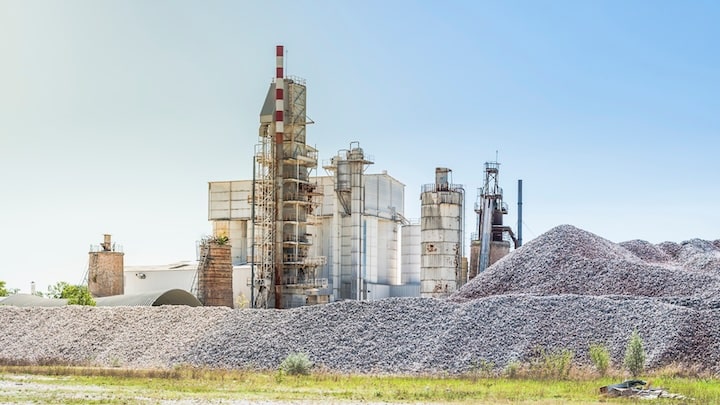This report represents the research and views of the author. It does not necessarily represent the views of the Center on Global Energy Policy. The piece may be subject to further revision. Contributions to SIPA for the benefit of CGEP are general use gifts, which gives the Center discretion in how it allocates these funds. More information is available at Our Partners. Rare cases of sponsored projects are clearly indicated. For a full list of financial supporters of the Center on Global Energy Policy at Columbia University SIPA, please visit our website at Our Partners. See below a list of members that are currently in CGEP’s Visionary Annual Circle.
-
CGEP’s Visionary Annual Circle
-
(This list is updated periodically)
Air Products
Anonymous
Jay Bernstein
Breakthrough Energy LLC
Children’s Investment Fund Foundation (CIFF)
Executive Summary
In September 2020, China announced its intentions to peak carbon emissions by 2030 and achieve carbon neutrality by 2060. The neutrality goal in particular was a breakthrough for global climate ambitions: a net-zero target from the world’s largest emitter, responsible for around one-quarter of global greenhouse gas (GHG) emissions.
The two new goals—referred to in Chinese policy discourse as the “30-60” goals—are not China’s first public targets on GHG reduction. They are, however, the centerpieces of a new Chinese climate policy in which GHG cuts are a standalone goal rather than an ancillary benefit of more immediate priorities like energy efficiency and industrial upgrading. Prior approaches had required little engagement from firms in carbon management. Indeed, none of the largest Chinese firms in the coal power, cement, and steel sectors had publicized quantitative targets for reducing or controlling carbon emissions before the government announced the 30-60 goals. They faced little pressure to do so; authorities pressed firms in climate-adjacent areas like reducing air pollution rather than carbon management. The 30-60 announcement appears to mark a break from this era, forcing firms to adjust accordingly.
This report, part of the China Energy and Climate Program at Columbia University’s Center on Global Energy Policy, assesses how China’s high-emitting industries have responded to the 30-60 targets and the accompanying elevation of climate within national policy priorities. It focuses on corporate and sectoral emissions reduction targets through June 2021 among 30 major firms in three of China’s largest sources of direct emissions: coal power generation, cement, and steel. Based on this study, the author finds the following:
- Nine months after the 30-60 announcement, target-setting efforts by major firms and industry associations have been modest: a handful of near-term peaking pledges and just four net-zero pledges among the 30 firms reviewed. Many firms may be still addressing gaps in carbon management expertise and waiting for further policies and pronouncements that can clarify government expectations or establish official frameworks for target-setting.
- Targets from sector-leading firms in electricity generation suggest a push to complete their ongoing shift from coal to renewables as their main source of capacity additions. At least four of China’s six biggest coal power generators are aiming to peak emissions by 2025, and targets on expansions of non-coal capacity could collectively require sector leaders to add hundreds of gigawatts of renewable capacity to their portfolios. These additions will require an embrace of solar, a technology that China’s biggest power producers have historically eschewed. They will also require institutional reforms to enable the transition from a coal-heavy power system with rigid dispatch protocols to a low-carbon grid with flexible market designs.
- Cement firms have proposed a 2023 peaking target, while authorities are reportedly targeting a 2025 peaking date for steel. These targets are deceptively cautious. China’s infrastructure-heavy COVID stimulus has delayed long-expected output declines in each sector; the peaking dates proposed give each sector time to absorb excess demand.
- Chinese steel sector firms have offered more medium-term and long-term targets than their coal generation or cement counterparts, including 2050 neutrality targets from steel-sector giants Baowu and Hebei Iron and Steel. Policy pressures related to reducing air pollution and lessening dependence on imports for raw materials, as well as an anticipated decline in steel demand, may be incentivizing steel firms to issue such targets.
- Decarbonization targets issued or proposed thus far by the three high-emitting sectors and their leading firms evaluated in this report may align with China’s 2030 peaking target—the most immediate focus of emissions action planning and a fairly straightforward goal to meet. But achieving neutrality by 2060 will require far greater ambition—and policy signals that reward such ambition.
Observers should watch for the release of key policy documents over the coming months, particularly national sectoral five-year plans and emissions peaking action plans, to see whether Chinese officials are sending the signals needed for firms to start ratcheting up their long-term ambitions.






